There’s something eye catching about the combination of red, grey and black and this is what you have with the Dybowski’s Twinspot. These birds are one of the less common members of the Estrildidae family that are nonetheless being bred around the UK in small numbers. But are they the right bird for your aviary or bird room?
Meet the Dybowski’s Twinspot
The Dybowski’s Twinspot (Euschistospiza dybowskii) is one of just two species in the genus of the Estrildidae family called Euschistospiza – the other species is the Dusky Twinspot. Both are birds from Sub-Saharan Africa though they are very different visually as the Dusky Twinspot lacks its cousin’s bright plumage.
This species is native to areas across central Africa such as Cameroon, Nigeria, Senegal and Uganda and is a species of Least Concern in these areas, so numbers are stable and healthy. Its name comes from French botanist Jean Dybowski. Unfortunately, not a lot is known about the bird in its native environment – they have been reported to spend a lot of time foraging on the ground on the edge of forests and areas of dense vegetation as well as along trails through grassland.
Description
Both male and female birds have that eye-catching look to them – grey heads, red mantle and back as well as red upper tail. Their under belly has white spots on black feathers. The female does have a little browner shade to her wings and the red is slightly duller on the mantle but otherwise they are very similar.
If you plan to keep these birds in an aviary, then it is best to have a single pair to the enclosure and to keep away from birds with similar colourings – firefinches are one example of species that don’t seem to mix well with them. On the other hand, other red birds like the Strawberry Finch are reported to get along just fin. Often it depends on the personality on the birds in question. There can also be some male to female aggression, again depending on the bird. As they are African birds, they will need protection from the weather to ensure their survival.
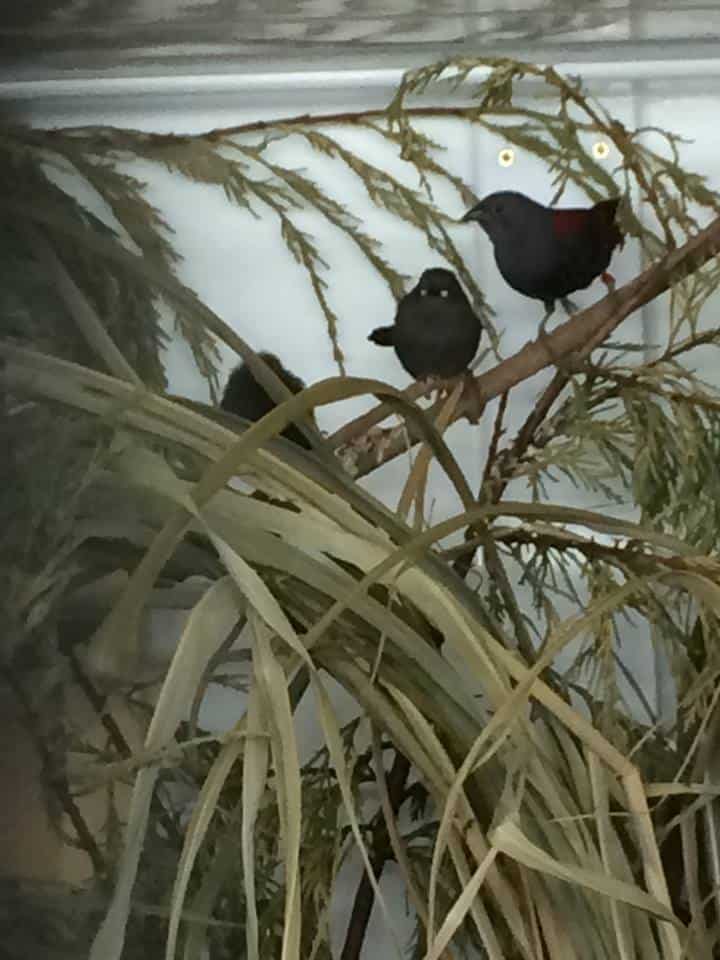
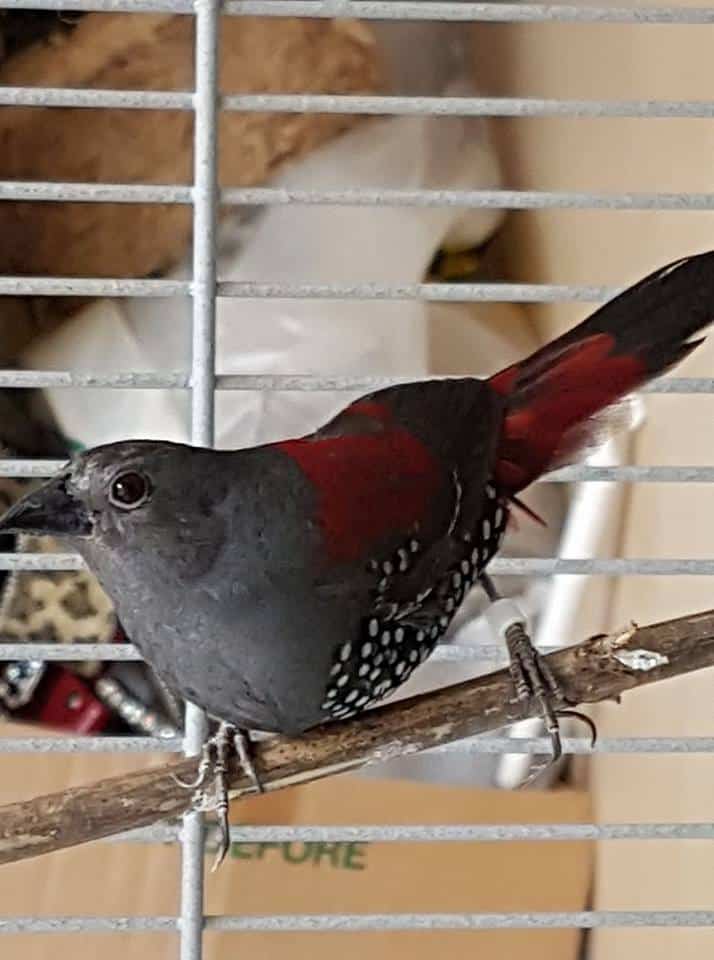
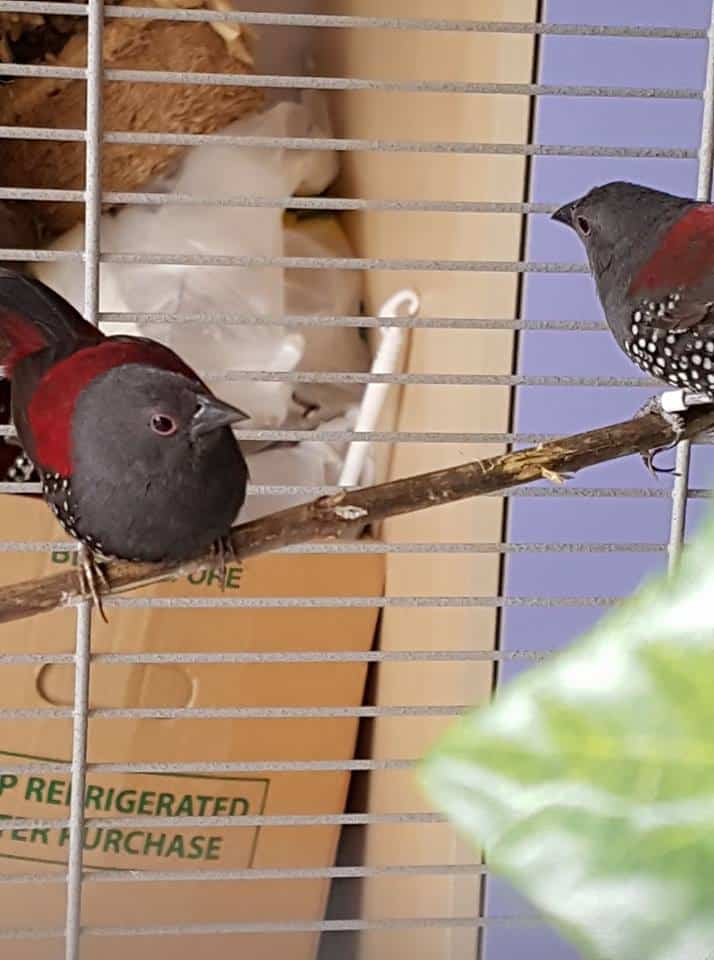
If you plan to cage breed the birds, then make sure the cage is a good size and has places where the birds can ‘hide’ so real or fake greenery to help them avoid being too nervous and allows them somewhere safe to roost. Flat flooring can be important as these birds are ground forages and this allows them to continue their natural behaviour. Forage bowls with a little soil, seed and even insects can be a good way to help with this instinct.
Diet and breeding
In the wild, Dybowski’s Twinspots naturally eat insects that they find in their foraging areas. In captivity, they also require live food providing for them but they can be a little greedy with it so it pays to limit their access. They will also take egg food, germinated seeds and half ripe seeds in addition to a good quality foreign finch mix. Fresh foods such as apple, broccoli and kale can also be offered.
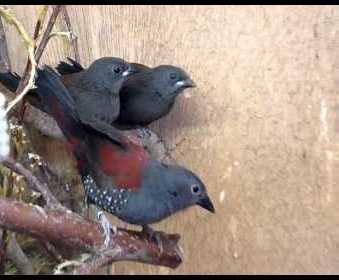
Like many of the family, these finches like to use materials such as coconut fibre and grasses to build their nest. They may use finch nest boxes but prefer to build their own nest in vegetation with plants such as conifer or pine resembling their natural environment enough to be utilised. Some nest on the ground while others prefer higher locations and the nest is a sturdy construction.
Three to seven eggs are laid and the female does most of the incubating. The chicks hatch at around two weeks and are very dark in colouring. Live foods and egg food are the primary raising foods and both parents do the job. The chicks fledge at around 17-21 days old and stay near the nest at first. By around four weeks, they should be weaned and then removed from their parents to avoid aggression.
Conclusion
A lot of the reading on this species shows it is tricky to breed, with one or two failed nests being common before the birds settle. Result from the Waxbill Finch Society also show that numbers being bred in the UK have dropped in recent years from 27 in 2012 and 30 in 2013 to just 10 last year. So if you have the experience and situation to try these birds, they are definitely worth the effort and you can help boost their captivity numbers.
Read a comprehensive breeder’s account – http://www.hofmann-photography.de/html/dybowski_s_twinspot.html
All photos used with owners permission and cannot be re-used without consent
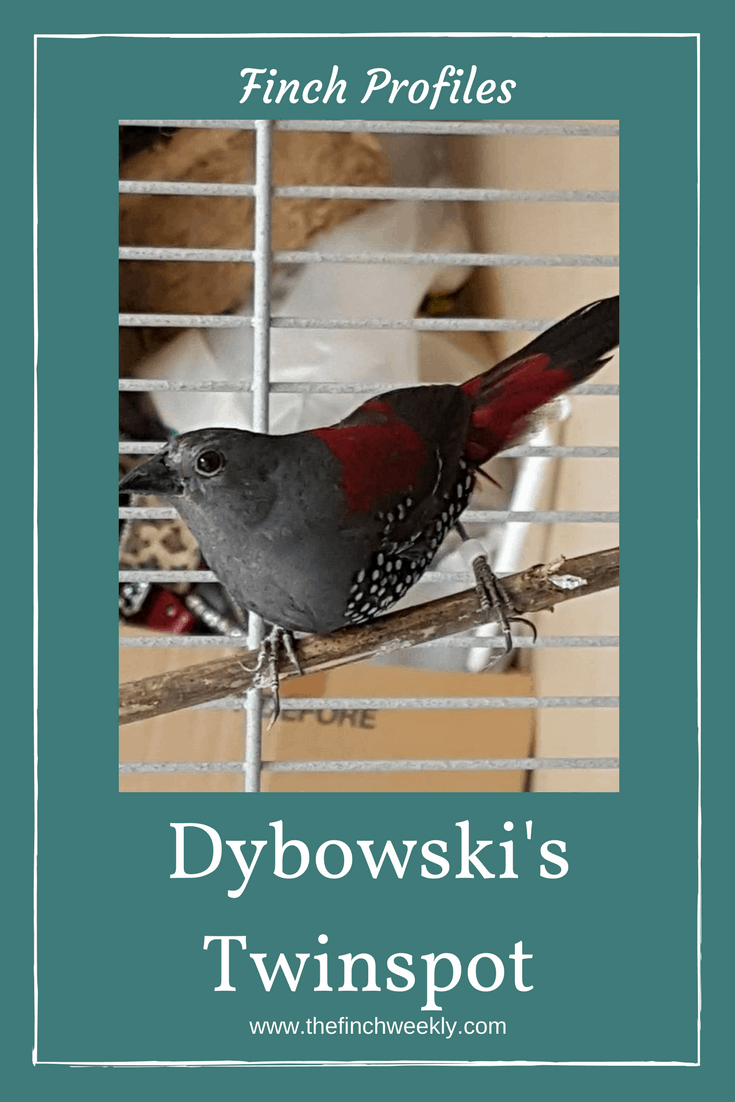
4.5
5